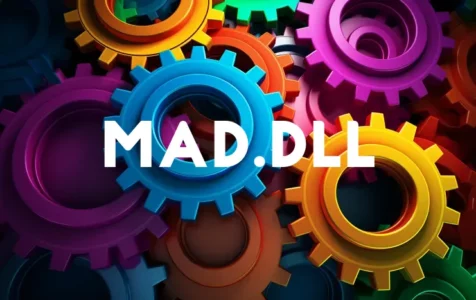Understanding the Mad.dll File and Its Safety
The Mad.dll file is a dynamic link library (DLL) file found in the C:\Windows\System32 folder on Windows computers. The purpose of DLL files is to contain functions that other programs can call upon during their operation. These files are crucial for the modular architecture of Windows, allowing separate components of a program to communicate and share functionalities, which promotes better resource management and code reuse.
However, Mad.dll is shrouded with concerns regarding its legitimacy. Unlike typical system files developed by recognized authors or companies, Mad.dll does not provide any information about its creator, which often is a red flag. Additionally, Mad.dll has the ability to inject itself into all running processes, potentially altering or manipulating their behavior, which is characteristic of malicious software.
Regarding its security implications, prominent antivirus programs have flagged Mad.dll as dangerous. Kaspersky defines it as ‘not-a-virus:AdWare.Win32.TotalVelocity.an’, and TrendMicro recognizes it as ‘TROJ_GEN.R99C1BB’. These classifications suggest that Mad.dll may be associated with adware or trojan-type infections, which could compromise system stability, privacy, and security.
Common Issues Associated with Mad.dll and How to Address Them
One of Mad.dll’s nefarious activities may include changing your browser’s default search engine and home page, an intrusive behavior typically associated with adware. If you find that your browser settings have been altered without your permission, you could restore them by resetting your browser to its default settings.
Expert Tip: For smoother PC performance, consider using a PC optimization tool. It handles junk files, incorrect settings, and harmful apps. Make sure it's right for your system, and always check the EULA and Privacy Policy.
Special offer. About Outbyte, uninstall instructions, EULA, Privacy Policy.
Other potential issues with Mad.dll involve error messages about the file being missing or causing programs to crash or not run properly. A missing Mad.dll file could be indicative of an incomplete installation or an inadvertent deletion.
To fix such issues, there are several methods you could employ:
1. Restore the original Mad.dll file either by downloading a copy from a trusted source or by copying it from another system with the same Windows version.
2. Use Windows’ built-in System File Checker (SFC) to scan for and restore missing or corrupt system files.
3. Update drivers that could be related to Mad.dll if the error messages point towards specific hardware or system functionality.
4. For adware-related problems, running a complete virus scan using a reputable antivirus program is critical.
Instructions for Repairing or Replacing Mad.dll
If you are missing the Mad.dll file, careful action is required to correct this issue. Here’s a step-by-step approach:
– First, attempt to download Mad.dll from a trusted source. Pay close attention to choosing the correct version of the DLL, which includes selecting between 32-bit and 64-bit versions and picking the appropriate language, if necessary.
– Once downloaded, the DLL file should be placed in the program’s installation folder or the system’s appropriate directory.
– After placing the file, you may need to register it using the Windows Command Prompt. You can do this by typing “regsvr32 mad.dll” and pressing Enter.
Preventative Measures and Best Practices
Keeping your computer clean and free from unnecessary files is paramount to preventing DLL-related issues. Here are some best practices you should regularly follow:
– Conduct periodic backups of important data and set system restore points to recover from potential future problems effortlessly.
– Keep your antivirus software updated and run regular scans to catch and resolve security threats early.
– Be cautious when downloading and installing new software, especially free versions, as they may come bundled with unwanted programs, such as Mad.dll.
– Regularly update system drivers and use trusted tools or services that automate the process of finding and installing the correct updates.
For more detailed assistance, including the experiences of other users and step-by-step guides, consider consulting the official Microsoft troubleshooting pages, tech forums, and developer communities. Engaging with others who have faced similar issues can provide valuable insights into resolving your specific problem. However, always remember to avoid unverified sources for downloading any files and never follow a link to DLL download sites that are not officially sanctioned, due to the high risk of malware infection.
